Are you a Quiet Speculation member?
If not, now is a perfect time to join up! Our powerful tools, breaking-news analysis, and exclusive Discord channel will make sure you stay up to date and ahead of the curve.
With another GP in the books, it's time once again to dig into the data. When I last did so right after the big MC weekend, the picture was muddied by contradictory results. Half indicated that Hogaak was a dominant force in the metagame. The other half indicated that it was just another deck. Its apparent domination was the result of hype driven population spikes rather than power. Hopefully, Minneapolis' data will clear things up.
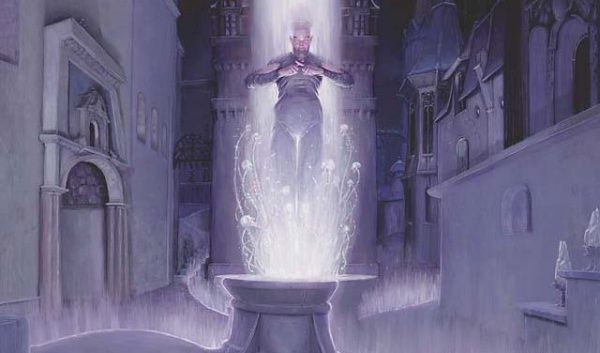
Players have had two weeks to digest and react to Barcelona, so the new data should indicate how the metagame has reacted. If the domination narrative is true, then we should see Hogaak facing a sea of counter strategies and still succeeding. If the other narrative is true, Hogaak's final results will be lost in the crowd to an extent. My starting assumption is that Hogaak will have a huge presence in Day 2 because of hype and attention. It will be the final standings which actually provide answers.
Day 2 Metagame
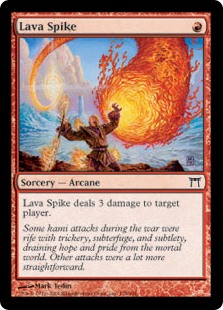 There is very little information about Day 1 to go on. All that I have is the three undefeated decks, none of which were Hogaak. Statistically and narratively, this fact means nothing. However, it is worth noting that all three decks look relatively normal for their archetypes. The only indication that Hogaak was the big deck in Modern are the four Leyline of the Void in both Humans' and Burn's sideboards. This suggests that the key to beating Hogaak is not overloading on hate or warping your deck. The undefeated players maintained good strategies and just enhanced them with hate.
There is very little information about Day 1 to go on. All that I have is the three undefeated decks, none of which were Hogaak. Statistically and narratively, this fact means nothing. However, it is worth noting that all three decks look relatively normal for their archetypes. The only indication that Hogaak was the big deck in Modern are the four Leyline of the Void in both Humans' and Burn's sideboards. This suggests that the key to beating Hogaak is not overloading on hate or warping your deck. The undefeated players maintained good strategies and just enhanced them with hate.
There were 168 other decks in Day 2 representing 35 different decks. That sounds like a lot, but most of those decks had two pilots or fewer. As a result, I'm only going to focus on the top eight decks from Day 2, which incidentally account for 2/3 of the results.
| Deck Name | Total # | Total % |
|---|---|---|
| Hogaak | 33 | 19.3 |
| Mono-Red Phoenix | 17 | 9.94 |
| Burn | 13 | 7.6 |
| Tron | 13 | 7.6 |
| Jund | 12 | 7.02 |
| Eldrazi Tron | 11 | 6.43 |
| Urza | 10 | 5.85 |
| UW Control | 7 | 4.09 |
That is a lot of Hogaak. I expected this to be the case, but I didn't think it would be by this wide a margin. The next best performer, Mono-Red Phoenix, has half as many representatives. That does give credence to the domination narrative, but as mentioned it's not quite that simple. That mono-Red came second is very interesting. It has always been in Izzet's shadow, but it appears the all-in strategy is doing better in a Hogaak-heavy world. I'm guessing that being a hybrid Burn deck, and therefore having a faster kill speed at the cost of Thing in the Ice and late-game gas, is the answer, but I have no way to be sure. That normal Burn is also doing very well does lend credence to that theory.
The Complication
Given that the starting population is unknown, I would not dig much further into the Day 2. Without knowing the Day 1 population, the Day 2 is contextless. In an even field, the a priori assumption is that decks make Day 2 in proportion to their overall population. Unbalanced formats should have the offending deck be disproportionate compared to the 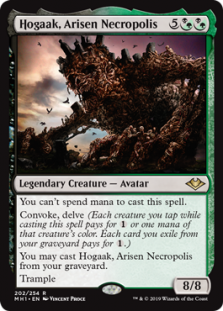 starting population. If Hogaak was around 20% of the Day 1 population, then its Day 2 numbers are to be expected and don't mean anything. If it was less than that, we'd be looking at a very dominant performance and more than 20% of Day 1 would indicate that Hogaak underperformed. We don't have the data to determine which scenario is true.
starting population. If Hogaak was around 20% of the Day 1 population, then its Day 2 numbers are to be expected and don't mean anything. If it was less than that, we'd be looking at a very dominant performance and more than 20% of Day 1 would indicate that Hogaak underperformed. We don't have the data to determine which scenario is true.
Given the spotlight on Hogaak, its performance in Barcelona, and the general narrative of it being broken, I'm more inclined to believe that the latter scenario is true. It wouldn't be the first time the heavily hyped deck showed up in high numbers but didn't convert proportionately. This does not diminish the numbers Hogaak put into Day 2 or hand-wave away the deck. It simply means that this apparent domination may not be merit-based but population-based. This would tend to overstate the power and prevalence of the deck relative to its true value.
The Top 16
The real decider will be the final standings. The difference between high finishes and the overall population was the source of the MC Weekend's ambiguity. Truly dominant decks should finish highly in addition to filling up the field. Izzet Phoenix never really did this, while it was the defining feature of Eldrazi. Hogaak needs overwhelming numbers to prove itself.
And it has them. By a slightly wider margin over Mono-Red Phoenix than it had in the Day 2 data. This would tend to confirm the domination narrative. More significantly, Hogaak is 5/8 of the Top 8; comparatively, all the Phoenix decks were just Top 16, and 11th at best. Hogaak also closed out the finals. It is very hard to argue that Hogaak wasn't the defining deck of GP Minneapolis. Given the narrative from Barcelona, that it is defining Modern as well is looking probable. Why this has happened given its variance remains unclear, but that fact that it has done so is increasingly uncontestable.
It is notable that the only Day 1-undefeated player in this data is the Burn player Lucien Longlais. The other notable thing about Lucien is that he's not running Deflecting Palm, which seems really powerful against Hogaak. Choosing Hogaak is a 16 point life swing in Burn's favor, but only if Hogaak isn't sacrificed before damage. I still think that would be a favorable outcome, but I didn't Top 8 a GP with Burn.
Implications
It is clear that if you're going to any competitive event in the next few weeks, Hogaak will not only be the deck to beat, but very popular. Before this week, I'd say that skepticism was justified. That's very hard now, especially given how the wider press is handling the results. I expect Hogaak to only get more popular, either quantifiably or relatively as players shy away from events, as a result of GP Minneapolis. The question this leaves is how to respond. And that is tricky.
What to Do
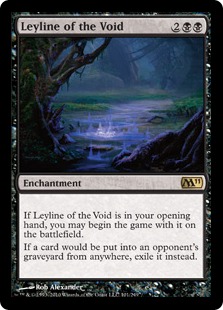 Given that the chances of an emergency ban happening are close to nil, players at both GP Birmingham and Las Vegas must endure Hogaak if they want to compete. I'm regretting registering for Vegas right after Bridge was banned. The conventional wisdom is to run lots of graveyard hate. Hogaak is all graveyard synergies and can't realistically cast the namesake card without a graveyard, so it makes sense to target that resource. Indeed, data analysis of MC Barcelona showed that successful non-Hogaak lists ran 4-8 pieces of hate depending on their speed. The faster the deck, the less hate it needed. Therefore, logically maxing out on hate will contain Hogaak.
Given that the chances of an emergency ban happening are close to nil, players at both GP Birmingham and Las Vegas must endure Hogaak if they want to compete. I'm regretting registering for Vegas right after Bridge was banned. The conventional wisdom is to run lots of graveyard hate. Hogaak is all graveyard synergies and can't realistically cast the namesake card without a graveyard, so it makes sense to target that resource. Indeed, data analysis of MC Barcelona showed that successful non-Hogaak lists ran 4-8 pieces of hate depending on their speed. The faster the deck, the less hate it needed. Therefore, logically maxing out on hate will contain Hogaak.
Leyline Needs a Lifeline
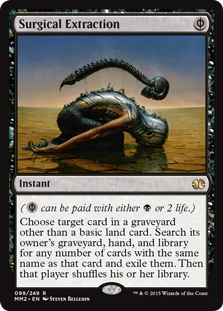 However, that strategy clearly isn't working. Hogaak dominated the MC weekend Day 2 populations, despite not winning anything or posting impressive Top 16 results. Then, it did it again this weekend, won the whole thing, and dominated the Top 16. All indications are that word is out and players are packing graveyard hate in quantity. And it just isn't working. It isn't that Hogaak is faster than the hate. Almost every player in the Top 16 had Leyline of the Void or something else playable turn 1. Hogaak apparently just beats all the hate. Given that coverage of Minneapolis was limited to twitter, I can only speculate as to why this happened.
However, that strategy clearly isn't working. Hogaak dominated the MC weekend Day 2 populations, despite not winning anything or posting impressive Top 16 results. Then, it did it again this weekend, won the whole thing, and dominated the Top 16. All indications are that word is out and players are packing graveyard hate in quantity. And it just isn't working. It isn't that Hogaak is faster than the hate. Almost every player in the Top 16 had Leyline of the Void or something else playable turn 1. Hogaak apparently just beats all the hate. Given that coverage of Minneapolis was limited to twitter, I can only speculate as to why this happened.
My theory is that the reliance on these fast hate cards is the problem. I'm always ragging on Surgical Extraction as overrated, but my feelings are similar for Leyline of the Void. That card is only good or even effective if it's in the opening hand. Odds of that happening are only ~40%, and aggressive mulliganing isn't a guarantee, even with the London mulligan.
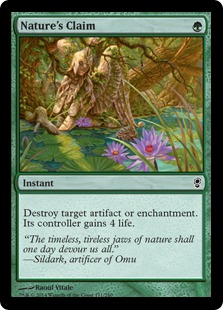 Then there's the question of the rest of the hand. I suspect that, given how much stock is put into hate against Hogaak, players are willing to keep otherwise bad hands if they open with Leyline or similar hate. These players are banking on Hogaak being impotent in the face of hate and giving them enough time to draw into the cards to start playing Magic. In a world where it's hate card or bust, that can be a viable strategy. However, that isn't true for Hogaak. For one, it has lands and can cast its threats, even if they're mediocre when cast rather than reanimated. Secondly, Leyline isn't game over for Hogaak, which completely invalidates the aggressive mulligan strategy and arguably makes it a liability.
Then there's the question of the rest of the hand. I suspect that, given how much stock is put into hate against Hogaak, players are willing to keep otherwise bad hands if they open with Leyline or similar hate. These players are banking on Hogaak being impotent in the face of hate and giving them enough time to draw into the cards to start playing Magic. In a world where it's hate card or bust, that can be a viable strategy. However, that isn't true for Hogaak. For one, it has lands and can cast its threats, even if they're mediocre when cast rather than reanimated. Secondly, Leyline isn't game over for Hogaak, which completely invalidates the aggressive mulligan strategy and arguably makes it a liability.
Hogaak is very prepared for to fight Leyline and graveyard hate in general. Most Minneapolis lists had full sets of Force of Vigor as well as various combinations of Assassin's Trophy and Nature's Claim. Hogaak's so ready for hate the winning player didn't even bring in his Leylines in the mirror just to give his opponent a lot of dead cards. Given the density of answers to Leyline, the risks involved, and the fact that even if Leyline is unanswered it may actually win, I'd stop running Leyline of the Void.
Another Line
Last week I observed that given the poor odds of success, it may be better to eschew Leyline entirely. Instead, I'm investigating whether it is better to simply try and play normal Magic and utilize more conventional hate like Rest in Peace. Instead of diluting my deck with lots of fast hate, I maintain my core strategy and look to beat Hogaak's slower starts with normal hate and removal. This functionally concedes to Hogaak's best starts, but again the evidence suggests there isn't much chance of beating those in the first place. If I therefore give up on trying to fight on that axis, I don't have to mulligan as aggressively and give up on otherwise playable hands. This gives my deck a better chance of executing its own plan and therefore winning on its own merits.
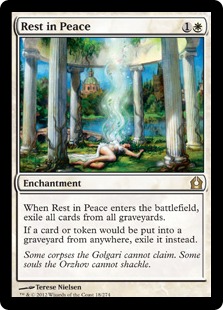 My results have been inconclusive so far. I've been testing a very hateful UW Spirits deck vs a more conventional one against various Hogaak decks, and they're in a statistical tie. Neither is doing measurably better. However, Hogaak's gameplan is still as swingy as ever, which muddies the waters to the point I can't tell if I'm actually having any effect on the games. More testing is required.
My results have been inconclusive so far. I've been testing a very hateful UW Spirits deck vs a more conventional one against various Hogaak decks, and they're in a statistical tie. Neither is doing measurably better. However, Hogaak's gameplan is still as swingy as ever, which muddies the waters to the point I can't tell if I'm actually having any effect on the games. More testing is required.
Even if my theory is wrong, moving away from graveyard hate may still be correct. I've heard a lot more anecdotal evidence of Hogaak players losing to Chalice of the Void, Ensnaring Bridge, Meddling Mage, and similar prison cards even more than to Leyline. This is somewhat supported by the data from Barcelona, where Urza decks appeared to have an advantage over Hogaak. Hogaak is stuffed with cheap enablers and is entirely combat focused. Thus is it quite vulnerable to a prison attack. This isn't a perfect solution since Hogaak's sideboard is filled with answers to prison cards, but they do tend to require answers. Graveyard hate can be ignored in a pinch.
More to Come
Perhaps GP Birmingham this weekend will show a turnaround and that Hogaak is finally being contained. I am skeptical, but there is always reason to hope that GP Las Vegas won't be horribly warped by graveyard decks. I've been down this road before, and occasionally broken formats are the price of playing competitive Magic. Best of luck to everyone searching for an answer to the menace. And if you find it, please share it with me. My testing for Vegas could use the help.





I’ve been wondering…if 20-25+ percent of the meta is going to be a deck with no reach, (usually) no hand disruption, and an inability to win through any other method than attacking…isn’t that typically the times in formats when a turbo-fog style strategy can have a chance of spiking some events? And since in theory, that style of deck would essentially not need to sideboard much, if at all against Hogaak (and any other similar strategy lacking interactions against fog effects like Dredge), that would free up the sideboard to shore up your other matchups instead.
It’s certainly possible.
The issue is whether such a deck can beat any other deck. Turbo-fog dominated aggro decks a few Standards ago but couldn’t really beat control or midrange, and I suspect it will have the same problem in Modern, only worse since there are also combo decks and Tron to consider. Having such a narrow maindeck attack thus puts a lot of stress on the sideboard and I don’t know if it could handle the pressure. To make it work would require a turbo-fog deck unlike any I’ve ever seen. But it could be done.
The first place my mind went is something like the Sultai Reclamation decks that have been floating around since Wilderness Reclamation was printed. You’re already running 4 cryptics that can be fog effects, and I could easily see adjusting the deck into maining a decent number of fog effects, relying on the Mystical Teachings/Wilderness Reclamation engine to sort of hold everything together.
In my experience those decks didn’t work in Modern. They tend to be reliant on the 4-mana enchantment to do anything worthwhile and frequently ran out of answers without really accomplishing anything. If you can solve that problem, then you’d be onto something in the current meta.